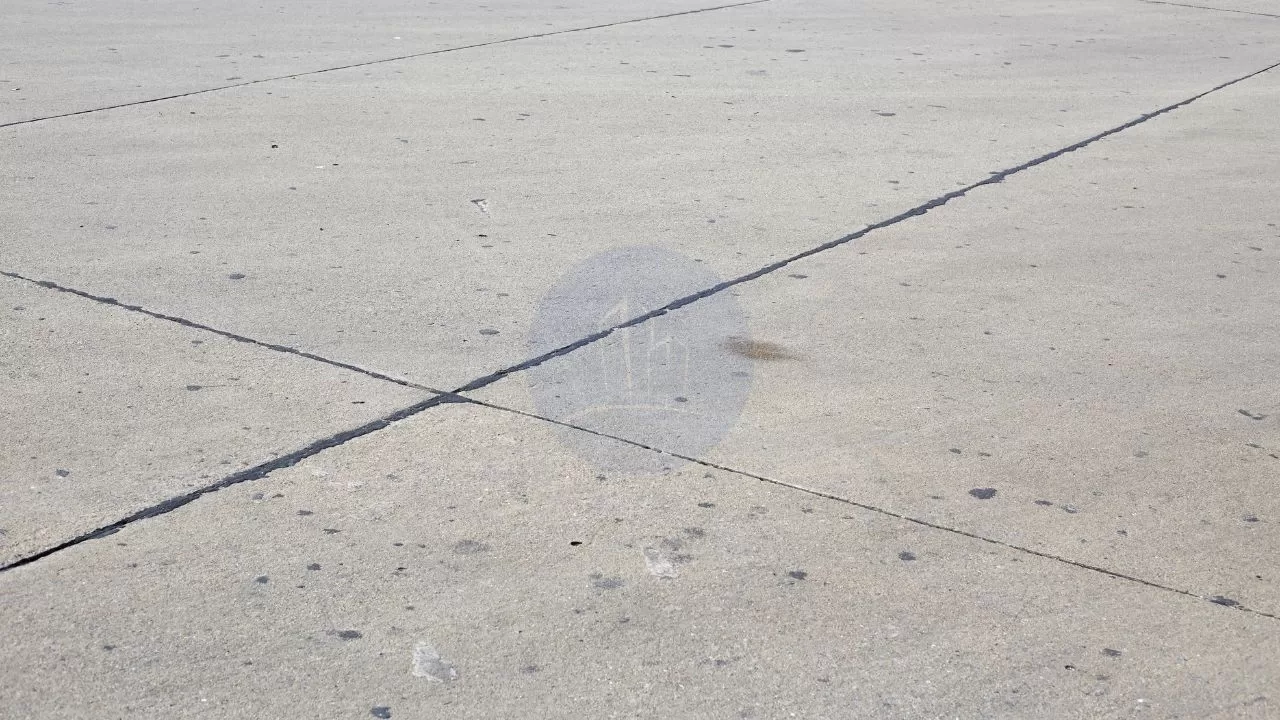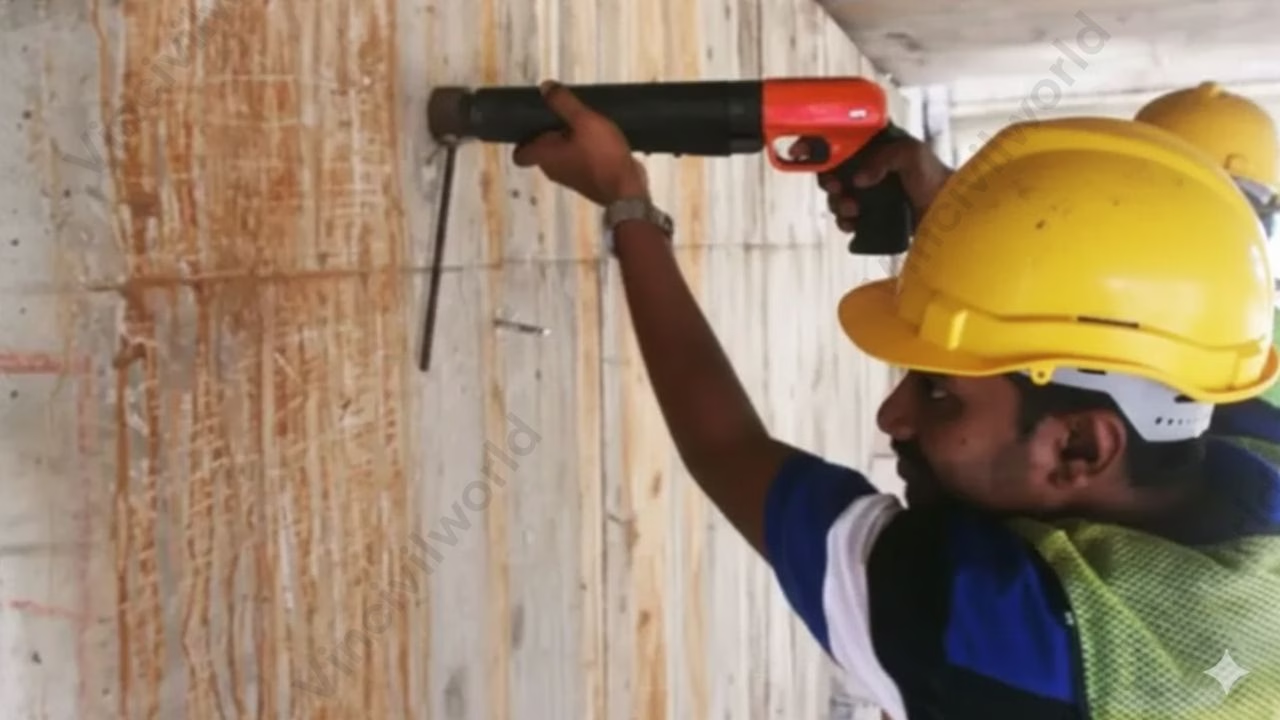Construction joints in concrete are a crucial and fundamental part of civil engineering and construction. Changes in temperature and moisture can cause concrete to expand and contract. Because concrete is weak in tension, shrinkage and volume change in concrete cause cracks. The construction joints installed at strategic locations prevent the formation of cracks in concrete and the development of tensile stresses. Types of construction joints like expansion joints, and control joints are critical in concrete construction to manage stresses and prevent cracks. Construction joints connect different concrete pours, requiring proper preparation and reinforcement for structural integrity. Expansion joints allow for thermal movement by creating gaps filled with flexible material to prevent buckling. Control joints, also known as contraction joints, are intentional grooves that guide crack formation due to shrinkage. Proper joint sealing methods ensure durability by protecting joints from water infiltration and environmental damage, maintaining the structure’s longevity.
Understanding the types and purposes of these construction joints is vital for effective concrete construction. Transitioning from design to installation, proper management of construction joints ensures a long-lasting and resilient concrete structure. This article discusses the significance of construction joint types in concrete structures like slabs and pavements etc and their applications and features
Table of contents
- What is a construction joint in concrete ?
- Construction joints in concrete – Significance
- Types of Joints in Concrete
- Summary of Differences – Joints in concrete
- Design Considerations for Construction Joints
- Material choice for Joints
- Installation Techniques
- Common Challenges and Solutions
- Key Takeaways
- Conclusion
What is a construction joint in concrete ?
A construction joint is a type of concrete joint used when a new section of concrete is poured next to an already set section of concrete. The purpose of a construction joint is to allow for some horizontal movement. It remains rigid against rotational and vertical movement. Concrete slab construction joints help control cracking and accommodate shrinkage or thermal expansion.
Construction joints in concrete – Significance
Construction joints in concrete are vital for the stability and longevity of concrete structures. These joints, like concrete construction joints and slab construction joints, help manage the stresses and movements. Concrete undergoes changes during curing and environmental changes. Properly placed concrete slab construction joints prevent uncontrolled cracking and make sure that construction joints in concrete slabs work effectively. They allow for natural expansion and contraction while maintaining structural integrity. Builders can address potential issues by understanding and implementing the right type of construction joints. This leads to more durable and reliable concrete structures. Hence, effective management of these joints is crucial for successful concrete construction.
Types of Joints in Concrete
Construction joints in concrete are crucial for managing movement and stress in concrete structures. Different types serve various functions, each ensuring the durability and performance of the structure.
- Construction Joints
- Expansion Joints/Control Joints
- Isolation Joints
Construction Joints in Concrete: Purpose and Types
Construction is often a time-consuming process and play a crucial role in managing this. They separate large concrete work into smaller, more manageable units. These joints are particularly useful in locations where construction stops at the end of the day’s work. It is used when a new section of concrete is poured next to an already set section. These joints ensure effective bonding between different pours while accommodating structural movement. They are vital for preventing cracks and maintaining the overall integrity of the structure.
Types of Construction Joints in concrete
- Butt Joints: Connect two concrete slabs without overlapping.
- Tongue and Groove type or Keyed Joints: Feature interlocking sections for added strength.
- But type Construction joints with dowel bars or Dowel Joints: Use dowels to align and transfer loads between slabs.
- Groove Joints: Formed by creating grooves in fresh concrete for controlled cracking.

On the basis of the structure, the construction joint can be vertical, horizontal and inclined. It is suitable for the construction of large slabs, irrigation channels, etc. These joints consist of keys at definite intervals. These keys help in resuming the work the next day. It also helps in uniform load distribution.
Expansion joints in concrete
Concrete construction often faces challenges due to the expansion of concrete from temperature and moisture changes. This expansion can lead to cracks and even structural failure. To address this, construction joints in concrete, particularly expansion joints, are used. These joints, also known as control joints, allow for controlled expansion of the concrete without causing stress, thus preventing cracks. For buildings longer than 45 meters, it’s common to include one or more expansion joints. In India, the recommended spacing is 30 meters. The joints are created by leaving a space between concrete slab construction joints. This space is typically at a depth of one-fourth the slab thickness. These construction joints can be installed either before or after the RCC is laid. Effective performance is ensured by cutting the joints deeply.
Types of Expansion Joints
- Compression Seal Joints: Use flexible materials that compress and expand with temperature changes.
- Sliding Plate Joints: Feature metal plates that slide over each other, allowing movement.
- Strip Seal Joints: Use rubber strips to absorb movement and seal against moisture.
- Bellows Joints: Use a flexible, accordion-like structure to accommodate movement in multiple directions.
These types of expansion joints are essential for maintaining structural integrity. For example, they include construction joints in concrete slabs. As a result, they prevent cracks and ensure long-term durability in concrete structures. Therefore, proper placement and installation are crucial for the success of any construction project.
Expansion joints are essential in bridges, pavements, and railway tracks. They are also vital in other large concrete structures. They ensure durability and prevent stress-related damage over time.
Contraction Joints in Concrete: Purpose and Types
Concrete is weak in tension, so when it contracts during hardening, it induces stress that can lead to cracks. To prevent unnecessary cracking, contraction joints in concrete are essential. These construction joints are installed before the RCC is laid. They are particularly useful in projects such as roads, retaining walls, floors, tunnels, and canals. Typically, contraction joints are spaced between 5m to 10m apart. Jointing tools are used for their installation. In reinforced concrete, contraction joints can often be avoided. In un-reinforced or lightly reinforced slabs, these joints are crucial. They minimize crack formation and maintain the structural integrity of the concrete.
Types of Contraction Joints
- Sawed Joints: Created by sawing a groove into the hardened concrete slab.
- Tooled Joints: Formed by hand-tooling a groove into the concrete while it’s still wet.
- Pre-molded Joints: Use pre-molded inserts placed into the slab to create a controlled crack.
- Formed Joints: Created by placing a strip of material in the concrete before it hardens to guide controlled cracking.
These types are vital in concrete slab ,consequently, they ensure that the structure remains durable and free from random, damaging cracks. Furthermore, proper placement of these joints helps maintain both the structural integrity and appearance of the concrete.

Summary of Differences – Joints in concrete
Intentionality
Intentional Joints: Contraction, Isolation, Expansion, and Construction joints are deliberately incorporated into design. They help manage structural behavior. These joints also facilitate building processes.
Unintentional Joint: Cold joints arise from unplanned delays and require remediation to ensure structural soundness.
Movement Accommodation
- Contraction Joints: Control crack locations due to shrinkage.
- Isolation Joints: Allow independent movement in all directions between connected structures.
- Expansion Joints: Accommodate expansion and contraction primarily due to temperature changes.
- Construction Joints: Facilitate construction without necessarily accommodating movement unless designed to do so.
- Cold Joints: Do not accommodate movement and may pose structural issues if not addressed.
Reinforcement Continuity
Interrupted Reinforcement: Isolation and sometimes expansion joints interrupt reinforcement to allow for movement.
Continuous Reinforcement: Contraction and construction joints typically allow reinforcement to pass through, maintaining structural continuity.
Affected Reinforcement: Cold joints may inadvertently disrupt reinforcement continuity due to placement delays.
Design Considerations for Construction Joints
Factors Influencing Joint Placement
Factors influencing the placement of construction joints in concrete include load requirements, environmental conditions, and the size of the structure. Consequently, proper placement ensures effective stress management and minimizes the risk of cracking. Moreover, consideration of these factors helps in deciding the type and location of concrete construction joints
Design Guidelines and Best Practices
Designing construction joints in concrete involves, first and foremost, ensuring proper alignment and spacing to manage stresses effectively. In addition, best practices include adhering to recommended joint spacing and depth, as well as using proper sealing materials. Furthermore, coordinating joint placement with construction phases is essential. Altogether, this comprehensive approach helps maintain the structural integrity of concrete slab construction joints.
Material choice for Joints
Selecting appropriate materials for construction joints in concrete is crucial for ensuring durability and performance. Typically, common materials include joint sealants, fillers, and reinforcement products. Moreover, the choice of materials depends on the joint’s role and environmental exposure. As a result, this careful selection ensures that concrete slab construction joints perform effectively under various conditions.
Installation Techniques
Effective construction and installation of construction joints involve several steps. Proper site and surface preparation is essential. You should follow detailed installation procedures. By doing so, you can address common challenges. These steps help ensure that construction joints are functional and durable. Adhering to these techniques minimizes the risk of issues in concrete slabs.
Preparing the Site and Surface
Preparing the site and surface for construction joints involves cleaning and leveling the area where joints will be placed. This step ensures proper adhesion and alignment of concrete slab construction joints. It is essential for achieving a smooth finish. This also prevents future issues in the concrete structure.
Installing Construction Joints: Step-by-Step
Installing construction joints in concrete involves several steps: marking the joint locations, placing formwork, pouring concrete, and finishing the surface. Accurate placement of concrete construction joints is crucial. Proper finishing techniques ensure they function as intended. These aspects enhance structural durability.
Common Challenges and Solutions
Common challenges include misalignment, insufficient sealing, and inadequate curing. Solutions involve meticulous planning, using quality materials, and following best practices for installation. Addressing these issues helps maintain the integrity of construction joints and ensures long-term performance.
Key Takeaways
Construction joints in concrete are essential for managing stress and movement within concrete structures. Properly placed concrete construction joints, such as slab construction joints and concrete slab construction joints, help prevent cracks and maintain structural integrity. Understanding the types of construction joints in concrete slabs—expansion joints, contraction joints, and others—ensures effective control of movement and stress. Key factors influencing joint placement include load requirements, environmental conditions, and structure size. By implementing best practices in design, material selection, and installation, builders can enhance the durability and performance of concrete structures, leading to long-lasting and reliable results.
Conclusion
Incorporating construction joints in concrete is crucial for the stability and longevity of structures. These joints manage the stresses and movements that concrete undergoes during curing. This includes concrete construction joints and slab construction joints. Environmental changes also affect the movements. Proper placement of various types of joints is crucial to control cracking. Understanding expansion and contraction joints is essential to maintain structural integrity. Builders should adhere to design guidelines and select appropriate materials. They must also follow correct installation techniques. These actions ensure that construction joints in concrete slabs function effectively. This comprehensive approach not only addresses potential issues but also contributes to the overall durability and reliability of concrete structures.




Hi! I like the idea that we can install joints to prevent our concrete structure from cracking due to heat expansion. The owner of my office building said last week that a major renovation has to be made on the retaining wall around the parking lot. Okay, time for a contractor to be employed to take care of the project.